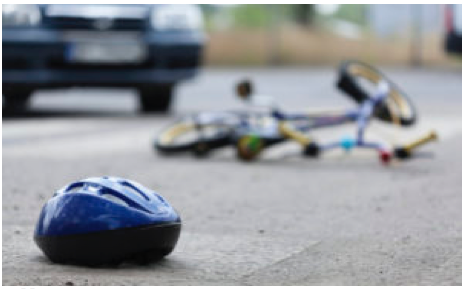CommentsTHE PREVEN PAPER--At its Vision Zero community update this coming Saturday at Loyola Marymount University, the Los Angeles City Department of Transportation will have some explaining to do.
Why did it choose Vision Zero safety improvement sites based on a point system which weighed the death of someone riding on a bicycle three times more heavily than it did the death of someone riding in a car?
Launched by Mayor Eric Garcetti in 2015, Vision Zero Los Angeles is a citywide initiative to eliminate all traffic deaths by 2025. The initiative has already spent tens of millions of dollars on road modification projects around the city, and is expected over the next eight years to spend hundreds of millions more.
How did the Mayor decide which roads to modify and in what way?
The answer is that he and the scores of City employees working full-time on the Vision Zero initiative used a point system.
Analyzing several years of traffic collision data from the Statewide Integrated Traffic Records System, the Vision Zero team assigned points to car accident sites around the city based on the number of injuries and fatalities which occurred there.
The greater the number of injuries and fatalities, the greater the number of points. The greater the number of points, the greater the number of tax dollars allocated to that location—more or less.
The problem is that not all injuries and fatalities were awarded the same number of points by the Mayor’s system; in fact, injuries and fatalities sustained by people riding in a car were given three times less weight than were injuries and fatalities sustained by people riding on a bike.
According to the official website of Vision Zero Los Angeles, cyclist and pedestrian deaths or serious injuries are “multiplied by three, while vehicle-vehicle deaths or serious injuries do not receive a multiplying factor. For example, if an intersection contains one fatal pedestrian collision, two severe bicycle injuries, and one fatal vehicle-vehicle, the score would be 10 (3 for the pedestrian, 6 for the two bicycles, and 1 for the vehicle-vehicle).”
The score would also be 10, according to the formula just described, if an intersection contains 10 fatal vehicle-vehicle collisions—just so long as no cyclists or pedestrians were involved.
But it is actually worse than that. Not only does the Mayor’s Vision Zero point system consider the death of a bicycle rider to be three times more important than the death of someone riding in a car, it also considers the injury of a bicycle rider to be three times more important than the death of someone riding in a car.
Better to have eight motorists die in a car crash, the logic goes, than to have three cyclists get seriously injured in that crash.
No matter how you slice the policy, it comes out obscene.
We’ll see you at the Vision Zero update meeting on Saturday at 1pm in Roski Hall at Loyola Marymount University. Don’t be late.
(Eric Preven and Joshua Preven are public advocates for better transparency in local government and are occasional contributors to CityWatch. A piece they wrote for CityWatch "It’s Time to End LA’s Secret Meetings: What Do City Council Members and LA’s County Supervisors Have to Hide?" won the LA Press Club award for Online Political Commentary.)
-cw
















